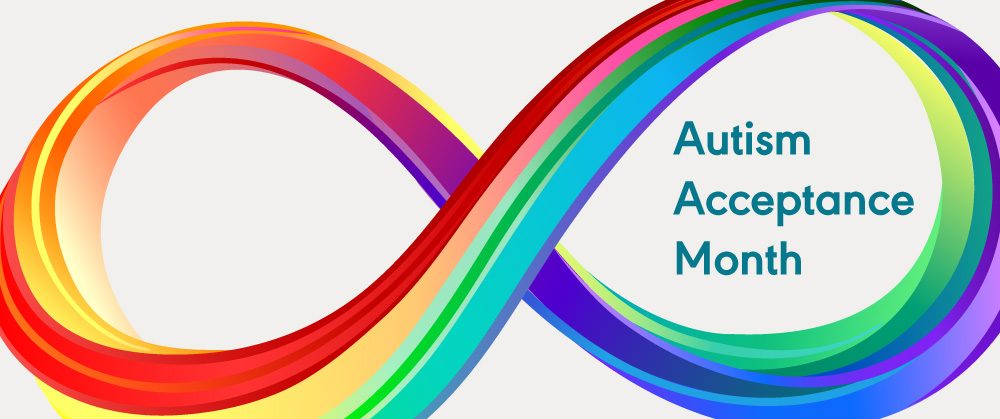Once again, we’re recognizing Autism Acceptance Month at the ASHA Journals. Although it presents differently in the millions of individuals diagnosed with autism in the United States alone, ASHA points out that people with autism may have social challenges, and that SLPs can play an important role in the autism treatment team.
We’ve published dozens of articles highlighting the latest research on speech and language in autistic children and adults since last year’s Autism Acceptance Month. The articles highlighted below look at the language development of children with autism, self-advocacy in adults with autism, and using augmentative and alternative communication (AAC).
The Latest Autism Research
Identifying Childhood Expressive Language Features That Best Predict Adult Language and Communication Outcome in Individuals With Autism Spectrum Disorder: Although previous studies reported that “useful speech” at age 5 predicted language outcomes for children with autism spectrum disorder (ASD), the term “useful speech” was only vaguely defined. In this article, the authors followed children diagnosed with ASD from ages 5 to 24 years old, pinpointing expressive language features that best predict adult language.
Caregiver Language Input Supports Sentence Diversity in Young Children With Autism Spectrum Disorder: Sentence diversity is a measure of early language development that hasn’t been used with children with ASD. In this article, children showed a clear improvement in sentence diversity when caregivers used behavioral intervention strategies at home.
Categorical Perception of Pitch Contours and Voice Onset Time in Mandarin-Speaking Adolescents With Autism Spectrum Disorders: Adolescents with ASD may present with enhanced pitch and impaired time perception, but how do they perform in a language that uses pitch and time changes to convey phonemes? This article studied the phonological processing of Mandarin-speaking adolescents with ASD.
Speech-Language Pathologist’s Role in Understanding and Promoting Self-Advocacy in Autistic Adults: This tutorial contains strategies, sample scenarios, lesson plans, and an informal assessment that SLPs can use to support the self-advocacy of autistic[1] students. Increased self-advocacy is a predictor of retention, adaptation, and graduation of autistic postsecondary students.
Autism and AAC
Effects of a Systematic Augmentative and Alternative Communication Intervention Using a Speech-Generating Device on Multistep Requesting and Generic Small Talk for Children With Severe Autism Spectrum Disorder: This study examined the impact of an AAC intervention using a speech-generating device in children ages 7−13. It is noteworthy that the authors found that using least-to-most prompting, time delay, error correction, and reinforcement supported multistep requesting and generic small-talk behaviors in these children.
“Two Friends Spending Time Together”: The Impact of Video Visual Scene Displays on Peer Social Interaction for Adolescents With Autism Spectrum Disorder: In this article, researchers found that adolescents with autism were more likely to communicate with peers when sharing a high-interest video as a form of AAC. The social interactions were rated highly by the adolescents with ASD, their peers, and school staff.
More Resources for Autism Acceptance Month
You can read our previous coverage of Autism Acceptance Month as well as the annual autism forum in Perspectives of the ASHA Special Interest Groups. Stay tuned later this month for this year’s autism forum from Perspectives!
Looking for more on autism? We have more than 600 articles in our archive, including articles from all five ASHA Journals and The ASHA Leader. Thank you so much for taking the time to celebrate Autism Acceptance Month with the ASHA Journals!
[1] Intentional use of identity-first language; see Gernsbacher (2017) for further information. ASHA adheres to the style guide of the American Psychological Association (APA) in using person-first or identity-first language to describe attributes and diagnoses of individuals or groups of people. When there is a preference, ASHA honors that preference. Listen to this episode of the ASHA Voices podcast for more on the use of identity-first and person-first language in autism.









